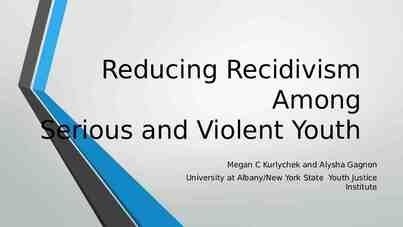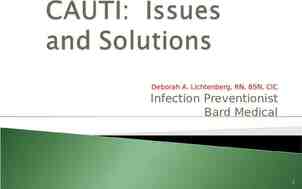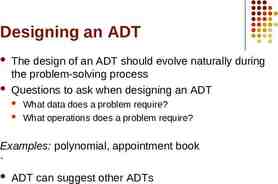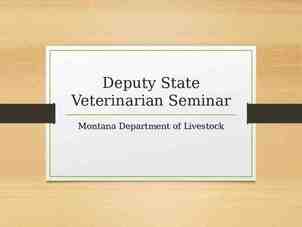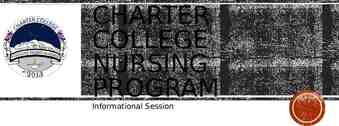Evidence-Based Health Care in Chiropractic Practice: A Clinicians
47 Slides2.68 MB

Evidence-Based Health Care in Chiropractic Practice: A Clinicians Perspective American Public Health Association 133rd Annual Meeting Richard Branson, DC Fairview Health Systems

“For Every Man There Exists a Bait Which He Cannot Resist Swallowing” Friedrich Nietzche 1844-1900 German Philosopher

Evidence-Based Medicine EBM How Can We Make EBM the Bait That Cannot be Resisted? EBM

Evidence-Based Medicine? We Need New Health Care Knowledge to Inform Our Decisions and Actions Related to Patient Care. “By Denying Our Uncertainty and Curiosity We Risk Becoming Dangerously Out of Date and Immune to Self-Improvement and Advances in Medicine.” T.H. White

The Media and The Public “They” Already Believe That Medical Practice is More “Scientific” Than Chiropractic Practice. “Chiropractic Has Been Marginalized and Does Not Have the Wiggle Room for Practicing Poor Evidence-Based Chiropractic Since We Are Trying to Up-Grade Our Reputation, Not Just Keep It.” Leach RA. Evidence-based Chiropractic: Critical Thinking in the Private Practice Setting. JACA 2005;Jan/Feb:37-46.

Unsubstantiated Claims in Chiropractic Jerry Grod, DC Institute for Evidenced-Based Chiropractic Nine of Nine (100%) National and State Chiropractic Organizations Publish and Distribute Patient Materials With Claims not Currently Justified by Scientific Evidence or are Intrinsically Untestable. Examples of Unsubstantiated or Untestable Statements: 1. “Chiropractic care is an effective alternative to drugs and surgery for many conditions”. 2. “80% of all headache suffers obtain substantial relief from chiropractors.” 3. “an uncorrected subluxation may lead to a deformity of the spinal column.” Grod JP, Sikorski D, Keating JC. Unsubstantiated claims in patient brochures from the largest state, provinical and National Chiropractic Associations and Research Agencies. J Manip Physiol Ther. 2001;24:514-9

Unsubstantiated Claims How Can We Expect Providers to Use EBM When Our National and State Organizations are Making Unscientific and/or Untestable Claims?

Provider Examples of Unsubstantiated Claims Donald E. Harte, DC World Chiropractic Alliance San Francisco Chronicle OPEN FORUM - Alternative to the sting of a failed flu vaccine Tuesday, January 27, 2004 “Chiropractic allows a better-running, healthier nervous system. Ample literature supports the successes of chiropractic with infectious disease.” “The Great Flu Pandemic of 1918 was the greatest plague of modern times. It is estimated to have killed between 25 million and 40 million people worldwide, about half a million in this country. History shows us that those under chiropractic care during the flu pandemic had a far better chance of survival.”

Provider Examples of Unsubstantiated Claims Willow Glen resident Lida Lopez Credits Fisher's Treatments With Helping Her to Conceive. By Christine Frey August 5, 1998 According to her chiropractor, Paul Fisher, Lopez had severe scoliosis. Her unaligned spinal cord compressed the nerves which led to her ovaries, blocking the brain's signals to ovulate. By straightening her spinal cord, Fisher says he released the pressure on the nerves; the brain's signals could then flow through her body.

Unsubstantiated Claims Web Site “If nerve impulses are obstructed to vital organs and glands, they begin to function improperly, and may produce a state of "disease". An adjustment, in physiologic terms, removes the blockage of nerve impulses caused by subluxation or other stresses to allow the body to function naturally.”

Federal Trade Commission Questions Chiropractic Claims Concerned About the Claims Made in Patient Brochures by Chiropractors. Examples: 1. "Chiropractic care is significantly more effective than commonly used medications such as Ritalin in treating children” 2. “Chiropractic care showed that they had "increased resistance to the common childhood diseases," specifically measles mumps, German measles and chicken pox.” Response by Dr. Triano: “While the conclusions espoused, perhaps, are attractive and popular to the DC, the experts can and will refute them with ease.” “members of the general public are likely to receive another negative image of the profession based on accusations of using unsubstantiated claims.” Dynamic Chiropractic September 21, 1998, Volume 16, Issue 20

Jerry Grod, DC Institute for Evidenced-Based Chiropractic What Evidence Do Chiropractors Use? 1. Private, Personal Experience or the Collective Experience of the Profession. 2. Evidence of Chiropractic Theory From the Basic Sciences. 3. Fallacious Reasoning and Dogma. – – “Chiropractic Works Because it has Never Been Disproved.” “It Just Makes Sense That Everyone Would be Better Off Without Nerve Interference.” Grod JP, Sikorski D, Keating JC. Unsubstantiated claims in patient brochures from the largest state, provinical and National Chiropractic Associations and Research Agencies. J Manip Physiol Ther. 2001;24:514-9

Empty Chiropractic To Practice Chiropractic in the Absence of Best Practice and Use of EBM is to Practice in a Vacuum. “Until the Average Doctor of Chiropractic Advocates the Use of Evidenced-Based Chiropractic the Best Interests of Our Patients and Society Will Not Be Well Served.” Leach RA. JACA Jan/Feb 2005; 37-46.

Traditional Sources of Information 1. Training - Half of What is Taught When We Were Students is Outdated in 10 years. Sydney Burwell, MD Dean at Harvard Medical School. 2. Textbooks - Often Old and Outdated for Causal Factors, Diagnosis, Prognosis and Treatment. Straus SE, Richardson WS, Glasziou P, Haynes RB. Evidence-Based Medicine: How to Practice and Teach EBM, 3rd ed. Edinburgh, Churchill Livingstone, 2005.

Traditional Sources of Information 3. Experts - Often Inaccurate and Inadequate at Producing Significant Change Independent of Other Methods. “There are as many opinions as there are experts.” Franklin D. Roosevelt “An expert is somebody who is more than 50 miles from home, has no responsibility for implementing the advise he gives and shows slides .” Edwin Meese III Former US Attorney General Thomson O'Brien MA, Oxman AD, Haynes RB, Davis DA, Freemantle N, Harvey EL. Local opinion leaders: effects on professional practice and health care outcomes. The Cochrane Database of Systematic Reviews 1999, Issue 1. Art. No.: CD000125. DOI:10.1002/14651858.CD000125.

Traditional Sources of Information 4. Didactic Meetings - Ineffective at Changing Behavior. Thomson O'Brien MA, Freemantle N, Oxman AD,Wolf F, Davis DA,Herrin J. Continuing education meetings and workshops: effects on professional practice and health care outcomes. The Cochrane Database of Systematic Reviews 2001, Issue 1. Art. No.: CD003030. DOI: 10.1002/14651858.CD003030. 5. Professional Journals - Overwhelming. To Find One Article of Quality and Relevance You Need to Read 86-107 Articles. Haynes DL, Devereaux PJ, Guyatt GH. Clinical expertise in the era of evidence-based medicine and patient choice (editorial). ACP J Club 2002;136:A11-13.

The Paradox Knowledge Our Clinical Experience Increases Over Time But Our Knowledge of New Treatment and Diagnostic Approaches Decreases Over Time. 0 years 5 years 10 years Experience 15 years 20 years Provider’s Are to Busy With Their Professional and Personal Lives to Keep Up On the Increasing Volumes of Information. Straus SE, Richardson WS, Glasziou P, Haynes RB. Evidence-Based Medicine: How to Practice and Teach EBM, 3rd ed. Edinburgh, Churchill Livingstone, 2005

National Chiropractic Support for EBM Resolution Passed by The American Chiropractic Association September 2004 “The ACA is Aware of Over-Utilization and Questionable Utilization of Care That Occurs in the Health Care Delivery System.” “The ACA Supports Evidenced-Based Medicine and Best Practices That are Predicated by an Objective Review of the Most Current and Valid Evidence Available in the Literature and Other Sources.”

Evidence-Based Medicine Patient Preference Clinical Evidence Core Decision Clinical Presentation Clinical Experience

The Chiropractic Oath In accordance with the law of nature, that law which God has prescribed to all men; and in consequence of my dedication to getting the sick well by the application of that law, I promise and swear to keep, to the best of my ability and judgement, the following oath: I will observe and practice every acknowledged rule of professional conduct in relation with my profession, my patient, my colleague, and myself. I will keep an open mind regarding the progress of my profession, provided that these progressions shall be confined within the boundaries of the chiropractic science, philosophy, and art. I will serve my patient to the best of my ability, violating neither his confidences nor his dignity, and in my association with patients I shall not violate that which is moral and right. I shall regard and refer to my fellow chiropractor with honor, giving credit where it is due. I shall improve my knowledge and skill, firm in my resolution to justify the responsibility which the degree of Doctor of Chiropractor symbolizes and imposes. To all this, I pledge myself, knowing these ideals are prescribed by the dictates of reason alone.

Knowledge Translation Electrical Power Analogy 1. Generate Research 2. Disperse Research Making Evidence Suitable for Health Care Providers 1. Generate Research 2. Integration and Dispersion of Science: Guidelines and Reviews 3. Step-Down to a Level That Can be Understood. 4. Suitable for Use by Providers. EBM 3. Step-down/Simplify Research 4. End User

ng The Research-to-Practice Pipeline Str o New research is entered into practice. W ea k Leakage occurs at all seven stages. If 80% knowledge transfer occurs at each step there is a 21% patient usage (0.87 0.21) Guidelines RCT reviews RCT’s Reviews of Observational Studies Observational Studies Physiologic Studies Clinical Observations Aware Peers Associations Patients Publications Payers Provider Accepted Marketing R-O-I Peers Experts Applicable Cookbook Clinical Variation Patient preferences Patient Able How do we apply the science? Access Knowledge Training Acted on Forget Neglect Habits Helped by reminders Agreed Made aware Accept it Undertake it Involves values and beliefs. Glasziou P, Haynes B. The paths from research to improved health outcomes. EBM 2005; 10:5-7. Adhered to Habits Money Fear Culture

Step 1 Aware Self Directed Learning Peers Publications Patients National and State Associations Health Plans

Marketing Step 2 Accepted " I have been using the ArthroStim for 7 months, and I absolutely LOVE it! It provides an alternative to a manual adjustment, is great for extremities, offers marketing opportunities as not all chiropractors use it yet, creates internal referral, and best of all it gets RESULTS." Dr. A. G. Return-On-Investment - “Will I Profit?” Experts and Peers - Influence the Use of Information and Products.

Step 3 Applicable Evidence Does Not Make Decisions Clinical Variation - Each Patient is Different. 1. Is My Patient Different From Those in the Study? 2. Is the Treatment Feasible for My Clinic Setting? 3. What are the Potential Benefits and Harms of the Treatment? 4. What are the Patients Values, Beliefs and Expectations? 5. Are There any Alternative Treatments?

Step 4 Able Training - Is Proper Training Needed to Use and Interpret New Tests or Treatment? Access - Is New Equipment Needed? Is the Treatment Within the Scope of Practice? Acupuncture

Step 5 Acted On Forget - Simply Don’t Remember Neglect - Choose Not to Use. Laziness. Change of Habits - Reminders are Helpful.

Step 6 The Patients View - Agreed Involves Values, Beliefs and Personal Goals. Provider Must Educate the Patient of New Information. The Patient Must Understand This New Information. They Must Agree With and Believe It.

Step 7 The Patients View - Adherence Habits Such as Staying Compliant With Exercise. Money - Can the Patient Afford the Treatment? Fear - Are They Afraid of the Test or Treatment? Culture - Can You Use the Treatment? Religious Beliefs, Cultural Beliefs. Minority Patients.

Barriers To an Evidence-Based Medicine Practice Time Skills & Applicability Uncertainty Tradition & Habits

Lack of Time The Average Clinician Spends 30 Minutes a Week on General Reading and Study. Sackett DL. Using evidence-based medicine to help physicians keep up-to-date. Serials 1997;9:178-81. We Need to Read 19 Articles a Day to Keep Abreast in A Specialty. Davidoff F, Haynes B, Sackett D, et al. Evidence-based medicine: a new journal to help doctors identify the information they need. BMJ. 1995;1085-8.

Poor Evidence-Based Medicine Skills 1991 Graduate of WSCC. – Critical Thinking Skills Were Not Taught. – No Training on What Evidence-Based Resources Were Available. Limited Training in Research and Statistics. – Study Design, Statistics and Technical Jargon is Difficult to Impossible to Understand. Limited Courses Available for CE Credit to Practicing Chiropractic Providers.

Applicability to Real-Time Practice Studies are Difficult to Apply. – Is the Test or Treatment Available, Affordable, Accurate, and Worth the Risk? – Are the Patient’s in the Studies Similar to My Own? Guidelines May not Target Correct Providers. – Guidelines were Primarily for Medical Doctors. Multiple Factors Involved in Decisions. – Is the Patient Willing to Partner in Carrying Out the Test or Treatment? – Will the Test or Treatment Help My Patient Reach Their Goals?

Uncertain of the Benefits to My Patients Patient Preferences of Treatment “I Don’t Believe the Research.” “My Patients are Different” Sicker, Older, Younger More Complicated

Habits and Resistance to Change Read the Literature Conferences and Training Related to New Tests or Treatments. Limited Time to Incorporate Research. Limited Resources to Obtain the Research (Costs, Internet, Ovid, etc ) “My Patients Get Well With the Treatment I Use. What Is The Point?”

Do Chiropractors Use Research? Survey of BCBS MN Network Providers “Do You Currently Use Guidelines or Clinical Pathways?” 60.00% 50.00% 50.00% 40.00% 35.00% 31.00% 26.00% 30.00% 30.00% 20.00% 10.00% 0.00% 2000 2001 2002 2003 2004 Yes 2000 n 272 (57%) 2001 n 389 (64%) 2002 n 418 (64%) 2003 n 477 (70%) 2004 n 503 (70%)

Survey of BCBS MN Network Providers “Have Guidelines or Clinical Pathways Improved the Way You Provide Care?” 30% 30.00% 29% 29.00% 28.00% 27.00% 26% 26.00% Yes 25% 25.00% 24.00% 23.00% 22.00% No Data 2000 2001 2002 2003 2004 2000 no data 2001 n 389 (64%) 2002 n 418 (64%) 2003 n 477 (70%) 2004 n 503 (70%)

and Ideas

1. Provide Low Cost or Free Access to Information. 2. Evidenced-Based Chiropractic Web Site. 3. Interactive Workshops. 4. Measure and Reward for Excellence. 5. Upgrade Continuing Education.

Free Access to Information 1. Provide Free Access to Research Resources. 1. 2. 3. 4. Ovid, CINDAHL - http://www.ovid.com Cochrane Library - www.cochrane.org Full Text Journal Articles and Reviews. BioMail - www. Biomail.org 2. Create and Provide a Free Journal of Evidence-Based Chiropractic. “Step Down” Research. Brief Summaries of Chiropractic Related Research. History, Examination, Diagnosis, Treatments, New Technology, Guidelines, Systematic Reviews, RCT’s.

Evidence-Based Chiropractic Web Site JEBC Sponsored by Major Players in Chiropractic National/State Associations, FCER, Insurance Companies, Others? Collaboration by Major Players May Help Acceptance by the Profession. Access to Free Material. Links to EBM Materials and Web Sites Related to the Practice of Chiropractic.

Interactive Workshops 3. Provide Low-Cost or No-Cost Interactive Workshops on EBM. 1. Offer Continuing Education Credits. 2. Collaborate with Insurance Companies. Sponsor Workshops, Provide List of Attendees. 3. National and State Association Collaboration and Sponsorship.

Measure and Reward 4. Determine Methods to Measure Use of EBM in Chiropractic. – Reward Providers Who have High Utilization of EBM and Documented Quality Improvement. – Partner with Employers and Insurers. – Look at www.bridgestoexcellence.com as an Example.

Upgrade Continuing Education State Boards Could Create Strict Approval Standards for Continuing Education Based Upon Current EBM. NBCE Train and Supply State Boards with Guidelines and Standards of CE Approval Related to EBM. Restrict Approval to Courses That Are Based On Substantiated Claims.

How Do We Create an Epidemic of EBM Use? “Ideas Can be Contagious Just Like a Virus Is.” 1. Law of the Few - Connectors, Mavens and Salesman. 2. The Stickiness Factor - Simple Message, Easy to Remember. 3. The Principle of Context - Broken Window Concept. The Environment.

Conclusions 1. EBHC Is In the Best Interest For All Parties. 2. Providers are the Closest Link to Patient and the Use of Tests and Treatments. 3. Chiropractic, Like Other Professions, Needs to Improve the Use of EBM. 4. Barriers, and Hopefully Solutions, Exist to the Widespread Incorporation of EBM Into the Chiropractic Profession.

Thank You for Your Time Happy Holidays AnnMarie Mariah Bailey Tyler

